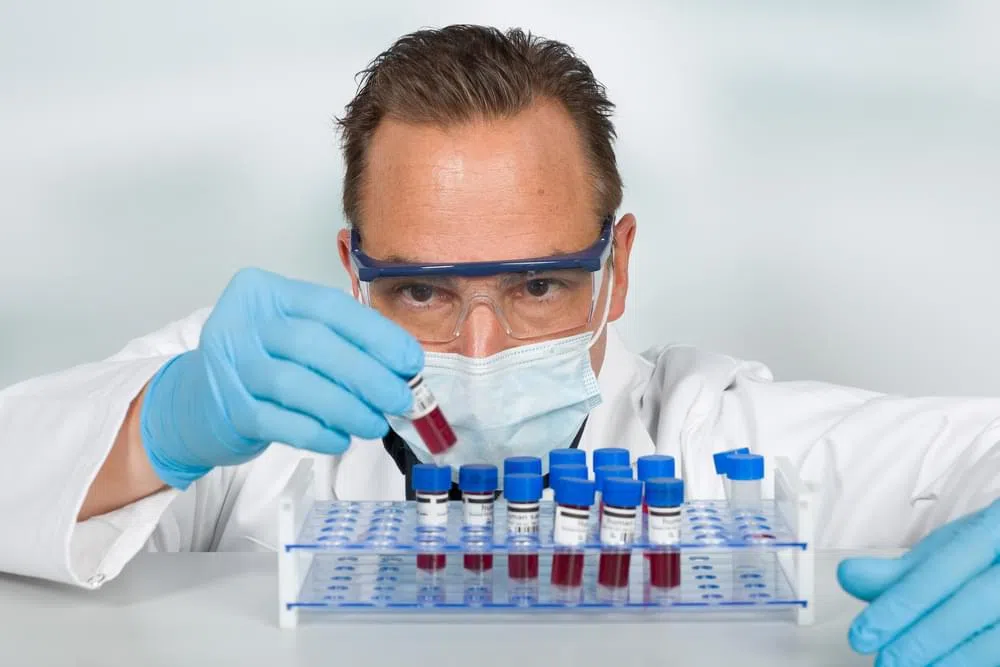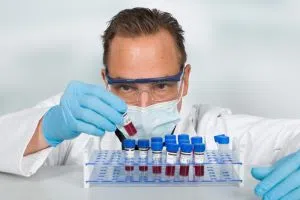There have now been 2 confirmed cases in the state of Indiana. The SXSW Festival was cancelled, the NBA is considering playing in empty arenas, and more large events are taking precautions. Here is what you need to know:
- While COVID-19 has been compared to the flu, there are differences
From a media briefing on March 3, World Health Organization (WHO) Director-General Tedros Adhanom Ghebreyesus outlined important differences between the two viruses. “First, COVID-19 does not transmit as efficiently as influenza, from the data we have so far,” he says. “With influenza, people who are infected but not yet sick are major drivers of transmission, which does not appear to be the case for COVID-19.”
The second major difference is that COVID-19 causes more severe disease than seasonal influenza, he says. “While many people globally have built up immunity to seasonal flu strains, COVID-19 is a new virus to which no one has immunity. That means more people are susceptible to infection, and some will suffer severe disease.”
Third, we have vaccines and therapeutics for seasonal flu, but at the moment there is no vaccine and no specific treatment for COVID-19, he says. “And fourth, we don’t even talk about containment for seasonal flu – it’s just not possible. But it is possible for COVID-19.”
While China is reporting a decrease in new cases, possibly as a result of containment measures, the potential public health threat from the new coronavirus is very high, both globally and in the U.S., according to the CDC. The number of people infected in the U.S. has been increasing. Connecticut has monitored at least 200 people for the virus, and officials note that they have no way to track people who are under voluntary self-quarantine. A growing number are under quarantine in New York City.
Meanwhile, doctors in the U.S. are keeping a close eye on the new virus. “With the new virus in a culture dish, they are looking at the biology and working to make drugs to treat it,” says Yale Medicine infectious disease specialist Joseph Vinetz, MD. There is also a great deal of effort underway to assess drugs in development (and some medications currently available) to determine if they are beneficial for treating patients infected with COVID-19, adds Dr. Martinello.
- The disease is thought to be most contagious when people are most symptomatic
While there has been sustained person-to-person spread in China, according to the CDC, the exact mechanism for transmission is still unclear. “There is still much to learn about how this pathogen is transmitted between individuals,” Dr. Martinello says. “Data is needed not only to better understand when those who become ill shed the virus, but also which body fluids contain the virus and how those may contaminate surfaces and even the air surrounding them.”
The disease is believed to be most contagious when people are the most symptomatic, and there may be some spread before people with the virus exhibit symptoms, although this is thought to be minimal. Symptoms can appear anywhere between 2 to 14 days after exposure.
Doctors say the most important route of transmission is likely close contact (six feet or less) with sick patients who spread respiratory droplets when they cough or sneeze. The risk of spread from asymptomatic people, and from touching surfaces and objects contaminated with virus is much lower than droplets spread from sick patients.
Older people and people with pre-existing medical conditions appear to be at highest risk for the virus, but people at any age have also been infected.
- If you feel ill, here’s what you can do
The severity of COVID-19 infection ranges from mild to severe, but the majority of cases in China have not required hospitalization. Common symptoms have included:
- Fever (of >4 F)
- Cough
- Sore throat in some people
- Difficulty breathing that can be severe enough to cause people to seek hospital care
Officials are urging patients to stay home and contact a health care provider (or hospital emergency room) for guidance if they experience fever, cough, or difficulty breathing, and if they have had contact with a confirmed COVID-19 patient and/or traveled from a hard-hit area within 14 days of the onset of illness.
- There are things you can do to protect yourself
As with a cold, there is no vaccine for the coronavirus—and a flu vaccine won’t protect people from developing it. While researchers are working on a vaccine for the new virus, it could take as long as 12 to 18 months to develop one, according to Anthony Fauci, MD, director of the National Institute of Allergy and Infectious Diseases.
To protect yourself from the new coronavirus, Dr. Vinetz says, “The best thing you can do at this point is take care of yourself the way you would to prevent yourself from getting the flu. You know you can get the flu when people sneeze and cough on you, or when you touch a doorknob. Washing hands—especially after eating, going to the bathroom, and touching your face—and avoiding other people who have flu-like symptoms are the best strategies at this point.”
The CDC also recommends the following preventive actions:
- Wash hands with soap and water for at least 20 seconds. If soap isn’t available, use a hand sanitizer with at least 60 percent alcohol.
- Stay home if you’re sick
- Avoid touching nose, eyes, and mouth. Use a tissue to cover a couch or sneeze, then dispose of it in the trash
- Use a household wipe or spray to disinfect doorknobs, light switches, desks, keyboards, sinks, and other objects and surfaces that are frequently touched
As for masks, there is little evidence supporting their widespread use for people who are not sick. “We generally do not recommend the use of masks for the general public,” says Dr. Martinello. “Masks may provide a modest degree of protection against fluids, including spray from a cough or sneeze, and they provide some filtration of the air. But, since the masks do not provide a tight seal around the wearer’s nose and mouth, much of the air inhaled and exhaled remains unfiltered.”
However, the CDC does recommend face masks for people who have symptoms of COVID-19, as well as for health care workers and others who may be caring for them.
- Precautions remain extremely important
The CDC is now working on multiple fronts to operationalize its pandemic preparedness and response plans, which include specific measures to prepare communities to respond to any local transmission of the new virus. In addition to large numbers of people needing medical care, widespread transmission could mean that people will need to stay away from schools, workplaces, and other places where people gather. Some schools, businesses, churches, and other organizations—especially in parts in the U.S. that are experiencing local transmission of the virus—are taking precautions that have included canceling events and other activities, restricting travel, and encouraging employees to work remotely.
Second, extreme caution is warranted because so much remains unknown about this new virus. New diseases aren’t discovered often and some (such as Ebola) are deadly. For now, spreading awareness and keeping people updated as scientists learn more, screening people who might be at risk, and separating those who are infected from healthy people—a basic public health intervention—are the best tools available. So, if you visit a health care provider or facility, it may be helpful to know that the COVID-19 signs you see and questions you may be asked about your recent travels and exposures are important.
Since threats like COVID-19 can lead to the circulation of misinformation, it’s important to trust information only from reputable health organizations and government sources such as the CDC.
Guidelines will evolve as doctors learn more
Here’s the latest information everyone should have to minimize the risk of exposure to the new virus. “Whether it is the flu, which we see every winter, or an outbreak of an emerging infectious disease, the public health infrastructure in the U.S. is a critical resource for leading the federal, state, and local response,” Dr. Martinello says. Because knowledge about the new virus is evolving rapidly, you can expect recommendations to change, even frequently.
If you are planning to travel, you will want to check the CDC’s travel advisories concerning several countries that have had confirmed cases of COVID-19. The CDC’s latest recommendations include avoiding nonessential travel to China, Iran, Italy, and South Korea. Travelers to Japan should practice enhanced precautions, which means older adults and people with chronic medical conditions should think about postponing travel to the country. Those going to Hong Kong should take the usual recommended precautions, including practicing proper hand washing and avoiding contact with sick people.
If you have traveled to an affected country in the past 14 days or have been exposed to another person with COVID-19, health officials will give you instructions on limiting your activities and movement for up to 14 days in order to help keep the virus from spreading. You should call a health care professional who will work with the CDC or state public health department to determine whether to test for the virus.
Healthcare providers who may be in the position of caring for a patient with the virus should follow infection control protocols. In early March, federal health officials announced new criteria that allows doctors to test any patient for COVID-19 if they are experiencing a cough, fever, or shortness of breath. (It’s unclear whether there will be enough tests for everyone that wants one, however, as the nation’s testing capacity is limited at this point.) The CDC is also encouraging doctors who want to test to first rule out other respiratory illnesses, including the flu, and to continue to consider the patient’s travel history and possible exposure to other people who may have had the disease.
Infection prevention specialists at Yale New Haven Health (YNHH) have provided guidance for the screening of patients with acute respiratory infections to determine whether they have been to China or other hard-hit locations across the globe in the few weeks before they got sick, or if they’ve been exposed to anyone who may have been ill with COVID-19. YNHH is taking a cautionary approach by putting masks on patients who may be at risk and placing them in a private room to ensure the safety or all patients and staff.
Meanwhile, public health authorities strongly advise everyone to get their annual flu shot if they have not done so already. In addition to preventing or mitigating the severity of flu, the vaccine will simplify the evaluation of patients with flu-like symptoms if potential cases of COVID-19 surface in the community.
[Originally published: January 23, 2020. Updated: March 6, 2020.]













